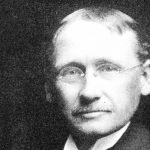Theory X and Theory Y by Douglas McGregor explained

Theory X and Theory Y: this article describes the Theory X and Theory Y, developed by of Douglas McGregor in a practical way. Next to what it (definition) is, this article also highlights the principle of Theory Y, it’s relationship to capabilities, a critical note on this theory and the importance of influence. After reading, you’ll have a basic understanding of this management and leadership style. Enjoy reading!
What is McGregor’s Theory X and Theory Y?
Definition
In 1960, Douglas McGregor developed a management and leadership theory, known as McGregor’s Theory X and Theory Y about organization and management in which he represented two opposing perceptions about people in their working environment.
He referred to these two perceptions as Theory X and Theory Y. Douglas McGregor then arrived at the conclusion that the style of leadership depends on the manager’s perception of people.
Theory X
In Theory X, Douglas McGregor summarizes the traditional view of management in a number of characteristic assumptions in which autocratic leadership style, close supervision and the hierarchical principle are the key elements.
Theory X starts from the assumption that people are naturally lazy, want to avoid work as much as possible, do not wish to take responsibility, have no ambition and prefer to be supervised.
The authoritarian leadership style is therefore the most appropriate leadership style in the Theory X approach.
According to this theory, pure work motivation consists of financial incentives. People want to avoid work and they must be continually coerced and tightly controlled. Therefore, the system of rewards and punishments works best for them.
Furthermore, their tasks and how these should executed must be laid down in detail. According to this theory, people definitely do not wish to bear any responsibility for their work.
Theory Y
Unlike in Theory X, Douglas McGregor starts from the assumption in Theory Y that people have different needs.
Theory Y management assumes that people are inherently happy to work, they want to exert themselves in the decision making process and they are motivated to pursue objectives and reach a higher level.
McGregor’s theory is rooted in motivation theory. Self-actualization is considered the highest reward for employees and the motivation employees use to reach self-actualisation allows them to reach their full potential.
There is no need for the system that involves rewards and punishments. People are prepared to take responsibility for everything they do. People want to use their creativity and they like to take a creative problem solving approach.
Principle of Theory Y
The central principle of Theory Y is that of integration: individuals can achieve their own goals by also focusing their efforts on the objectives of the organization they work for.
They want to get the most out of their work through satisfaction, appreciation and motivation. They seek responsibility, unlike Theory X that avoids responsibility.
Theory Y invites renewal processes and motivation can be traced back to the style of leadership. Theory Y therefore assumes that control, rewards and punishments are not the only ways to stimulate people. People can focus on the objectives they pursue through self-direction and self-control.
Leadership course: Become a better leader
McGregor’s Theory X and Theory Y is about capabilities
A democratic leadership style arises on the basis of Theory Y which allows the employees to have a greater say. Encouragement and rewards are used to motivate people rather than control and coercion. Employees are given an opportunity to develop themselves and put their capabilities to good use.
When an organization does not respond to this, employees will start looking for possibilities to deploy their skills outside their work. Initially, they will focus on hobbies, committee and voluntary work, but eventually this could result in a hunt for another job.
Critical note on the McGregor’s Theory X and Theory Y
The Theory X and Theory Y are not based on a single truth. Theory X managers and Theory Y managers often see their perceptions of people confirmed. The democratic approach of Theory Y makes people feel comfortable as a result of which they commit themselves wholeheartedly to the organization.
Managers who build on the basic principles of Theory X, are often met with a vicious circle in which their suppositions become reality and in which cause and effect are reversed. Their employees are accustomed to coercion and control and will therefore not make any effort at all or bear responsibility.
Influence
A good manager will realize that leadership affects employee behaviour.
In addition to their preference for a certain leadership style and the work that has to be done, a manager will either opt for Theory X or Theory Y. Theory X will sooner be implemented in industrial organizations where activities revolve around a high degree of productivity.
In instances where the thinking process is important and the employee is expected to act on their own responsibility, managers prefer to opt for Theory Y. Motivation is created because of the individual employee’s involvement and participation.
Now It’s Your Turn
What do you think? Is the McGregor Theory X and Theory Y still applicable in today’s modern management? Do you recognize the practical explanation of do you have more suggestions? What are your success factors for the good leadership?
Share your experience and knowledge in the comments box below.
More information
- Heil, G., Bennis, W., & Stephens, D. C. (2000). Douglas McGregor, revisited: managing the human side of the enterprise. Wiley.
- Lynch, R. G. (1978). The police manager: Professional leadership skills. Holbrook Press.
- McGregor, D. (1960). The human side of enterprise. New York.
- McGregor, D. (1960). Theory X and theory Y. Organization theory, 358-374.
- Carson, Charles (Spring 2018). A historical view of Douglas McGregor’s Theory Y. Management Decision. 43 (3): 450–460.
How to cite this article:
Mulder, P. (2015). Theory X and Theory Y (McGregor). Retrieved [insert date] from Toolshero: https://www.toolshero.com/leadership/theory-x-and-theory-y
Original publication date: 04/07/2015 | Last update: 12/27/2023
Add a link to this page on your website:
<a href=”https://www.toolshero.com/leadership/theory-x-and-theory-y”>Toolshero: Theory X and Theory Y (McGregor)</a>













6 responses to “Theory X and Theory Y by Douglas McGregor explained”
I have found this theory very useful in my work as Faculty Officer at the University of Cape Coast. I had to deal with staff absenteeism peculiar to one administrative assistant in a School and I used theory Y instead of theory X.
Non of the theory is absolutely bad. Human beings are complex. The situation tells which of theories to put into use.
Really the theories propounded by Douglas McGregor actually the human nature. They are useful to me and can used at places that they best fit.
Thank you for your comment, Raymond.
Mc Gregor’s theory X and Y are still applicable in today’s leadership styles.My rationale is based on the fact that the assumptions of the leader on the part of the employee who is in the category of theory X reflects the total mental make up of an individual. Such a personality that warrants coercion to be productive is based on the genetic make up and environmental factors that shaped the personality of individuals perceived to be lazy. When such are handled by an autocratic leader, in line with the normative reductive theory, they become productive. I saw that in my work as a nurse manager that even the most unproductive become reproductive once coerced to so. I could assign them duties that warranted them handling program finances, working long hours and travelling in the countryside, but they could accomplish duty with a good report in time. Therefore, the understanding of the theories X and Y by the leader is of greater use in meeting organizational goals even in this age.
the theory is so great but I would like to know more about it and more so it’s applicability in the 21st century organization